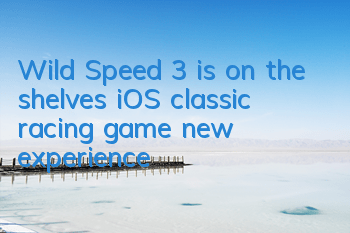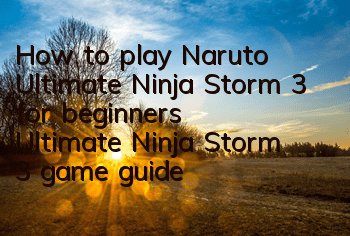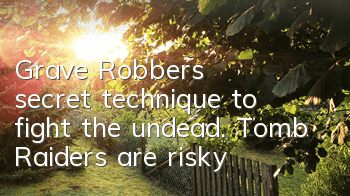Detailed explanation of Diablo 2 Pure Stories Necromancer (Newcomer's Way to Open the Way) (Skills Chapter)
Hello everyone, thank you for reading this article. I hope the following content will be helpful to you.
The editor will conduct a novice analysis of the professional genre of Pure Duckling Necromancer. Due to the length, it is divided into attributes, skills, and equipment for detailed explanations. After completing the Attributes Chapter last time, this time we will bring a Skill Chapter. It is recommended to eat it in conjunction with the Attributes Chapter and subsequent equipment chapters. Friends can click on the editor’s homepage and find the content of three chapters in it. The editor will bring a series of content related to Blizzard games.
Attribute Chapter Diablo 2 Pure Stories Necromancer Detailed explanation (Newcomer's Way) (Attribute Chapter)
Thank you again for your support.
According to the convention, this article is still a novice article, mainly aimed at new players who are new to Diablo 2 but have no idea how to start, and is not suitable for old players to read.
The following main article begins! Friends who are in a hurry can directly pull it to the end of the article. The editor will combine three skill trees to give priority points for beginners and graduation points.
1. Positioning of Pure Stop Necromancer The skills of the necromancer are mainly divided into three major modules: Summoning technique, toxins and bone techniques, and curse techniques As the difficulty progresses, we will also make different adjustments to the focus direction of skills based on our own needs and equipment acquisition. Some skills such as aging and rebirth require a lot of passing skills, so we usually hope to obtain them directly from the equipment, and we can not click them in the early stage. In addition, we need to realize that although the pure summoning necromancer fights on the summons from beginning to end, the role of the summons is actually changing as the difficulty progresses. For ordinary and nightmare difficulty, summoning objects can serve as both output and tank. But for the difficulty of hell, before the top equipment is available, the output of the summoned object is far from enough. At this time, the summoned object exists as a tank. The points added to the purely summoned necromancers during graduation are clear on the Internet, so this article will focus on explaining the lateral points of the early skills based on the situation of the novice in the wilderness period. Below we will divide it into three major modules to explain the skills of novices during the opening period. (Since there are translations of each versionThe skill name shall be based on the illustration) 2. Summoning Technique Summoning Technique is the core skill tree for summoning stream necromancers, and most of our skill points are also contributed to this. Below we will conduct a detailed analysis of the skills. Newcomers often make a mistake when adding points. The more brothers, the better. Looking at the little brothers full of screens, the sense of security can also be directly overflowed. But in fact, due to the limitations of a large number of maze terrain and the increase in the strength of monsters in the middle and late stages, our requirement for me is to focus on quality and not weight. So, we need to clearly understand which of these summoners are useful to us. Skull Series: Skeletons are mainly divided into two templates, warriors and mages. Select: Warrior As mentioned above, the function of the summoned object is output and tanks. Warriors can serve both of these two points, especially in the difficulty of hell, the strength of the skeleton is crucial to our destruction. Compared with warriors, the mage skeleton is unable to do this job due to its slow attack speed, low attack power, and insufficient strength. The main function of a mage is that its different attributes can bring corresponding effects. For example, the poisoning effect of the toxin mage, the freezing effect of the frost mage, etc., but as the difficulty increases, a large number of demon-free monsters will appear in the future, and the skeleton mage will be completely useless at this time.
Stone Demon Series: The Stone Demon Series is mainly divided into four major modules: clay, blood, steel, and flame
Select: Clay Stone Demon
After the late stage, you can choose the Iron and Stone Demon, because this article is mainly aimed at the opening period, so the content involving the Iron and Stone Demon is not mentioned for the time being.
The reason why we choose the clay stone demon is mainly because we need to rely on its characteristics: strong vitality and slowing effect. We do not need the output ability of the Stone Demon. The skeleton can already bring enough output in the early stage. Even if the Stone Demon points are fully increased in the later stage, its output ability is very small. Therefore, the positioning of the Stone Demon is functional.
The slowdown effect is a very important skill for us to renovate the boss during the novice period. Especially in the difficulty of hell, the slowdown of the clay stone demon and the aging curse can directly turn the boss into slowness.Actions help us complete the kill.
To sum up, we can also find a way to add points to the summoning technique around the two core cores of skeleton warriors and clay stone demons.
Priority: Resurrection Skeleton, Skeleton Mastery Full
Sub-priority: Clay Stone Demon full. Golem mastery 1 point, summoning 1 point of resistance (you can add 1 point to these two skills after 1 point of clay stone demon, and then add clay stone demon in the future)
Graduation points: Blood Golem, Steel Golem, and Flame Golem
Resurrection of skeletons 20 points, skeleton mastery 20 points, clay stone demon 20 points, golem mastery, summon resistance, blood golem, steel golem, and flame golem each
3. Toxins and bone surgery
For purely summoned necromancers, toxins and bones are not the skills we need, but one of them is our main output method after entering hell difficulty, that is Corpse explosion.
In the difficulty of hell, the summoned object can no longer assume the output role, while his mercenary, Brother Mishan, lacks AOE skills. Since the necromancer is a character who is fragile and lying flat all the way, don’t expect the body to exert its combat power. At this time, the corpse explosion becomes our core output skill.
The output core of the hell difficulty is: the skeleton acts as the tank role, the corpse is created by Mishan, and the corpse explosion is used to harvest large-scale AOE damage. All single units will be handed over to Mishan to complete the output.
Therefore, our dot mode is also released, with 1 point of bone teeth and 20 points of corpse explosion.
In the early stage, since the summoned object output is acceptable, the corpse explosion only affects our efficiency and does not affect the revitalization. Moreover, due to its large blue consumption, it can temporarily give up or only add 1 point in the early stage, and its priority is smaller than the summoning system.
It should be noted that adding points to the corpse explosion does not affect the damage, it only affects the range, and its damage is also floating. But this does not mean that the scope is not important, especially when frying cows in the cattle farm in the later stage, the importance of scope is reflected. If the scope is insufficient, due to its floating damage to each, there will often be an embarrassing situation where the monster is still alive but the corpse is blown away.
4. Curse
As we said before, pure summoning depends on the performance of my younger brothers, and it only plays an auxiliary role. Curse-based skills are an important skill tree for us to do a good job in assisting our jobs. (The Iron Virgin in the picture is actually a damage backlash)
There are two curse-type spells we need to use during the destiny period: damage deepening and aging
It should be noted that the curse-type skill is the same as the corpse explosion, and the level can only affect the range and not the value.
But unlike corpse explosion, the curse system is low in blue consumption and fast release, and is not limited by the number of corpses, so the range is not important. For us, it is just a few more strokes.
So, our points are: damage deepening by 1 point, weakening by 1 point, fear by 1 point, and aging by 1 point. The weakening and fear are passing skills. If you have equipment to directly add the aging skills, we only need to point 1 damage to deepen.
Priority: Damage Deepening
Its priority: Aging
Because the deepening of damage can provide us skeletons and Mishan with 100% damage bonus (it can be simply understood as double the number of people in the output), we can directly click it in the early stage. The main effect of aging is to reduce the attack speed of the BOSS and help us unlock the BOSS. Since the BOSS in the early stage is not strong, you can consider it after the difficulty of the nightmare.
5. Comprehensive points
According to the above, the points for Pure Slave Necromancer are as follows
(1) 20 points full: skeleton resurrection, skeleton mastery, corpse explosion, clay stone demon (in the open period, steel stone demon can be replaced in the later stage)
(2) Add 1 point: Golem mastery, resistance summoning, blood golem, steel golem, flame golem, damage deepening, aging
(3) Add 1 point (passing skills): bone teeth, weakening, fear (if you have equipment to directly add aging, weakening and fear can not be added)
(4) Extra Skill Points: Dominating the Stone Demon
According to our land reclamation process, we can generally follow the following priority points for skill additions.
Normal difficulty (level 1-35): damage deepens by 1 point, and the remaining points are given to the skeleton's resurrection and control of the skeleton. You can add 1 point to the corpse explosion or not.
Nightmare difficulty (level 35-65) gives priority to resurrection and dominance points for the skeleton, give 1 point for the corpse explosion (if not added before), clay stone demon 1 point, stone demon dominance 1 point, summon object resistance 1 point, aging 1 point, and all other points are given to the corpse explosion.
Hell difficulty (level 65-80) priority to fill up the corpse explosion
The above is the entire content of this skill chapter. Your support is my motivation to update. Next, I will rush to publish the equipment chapter as soon as possible.









